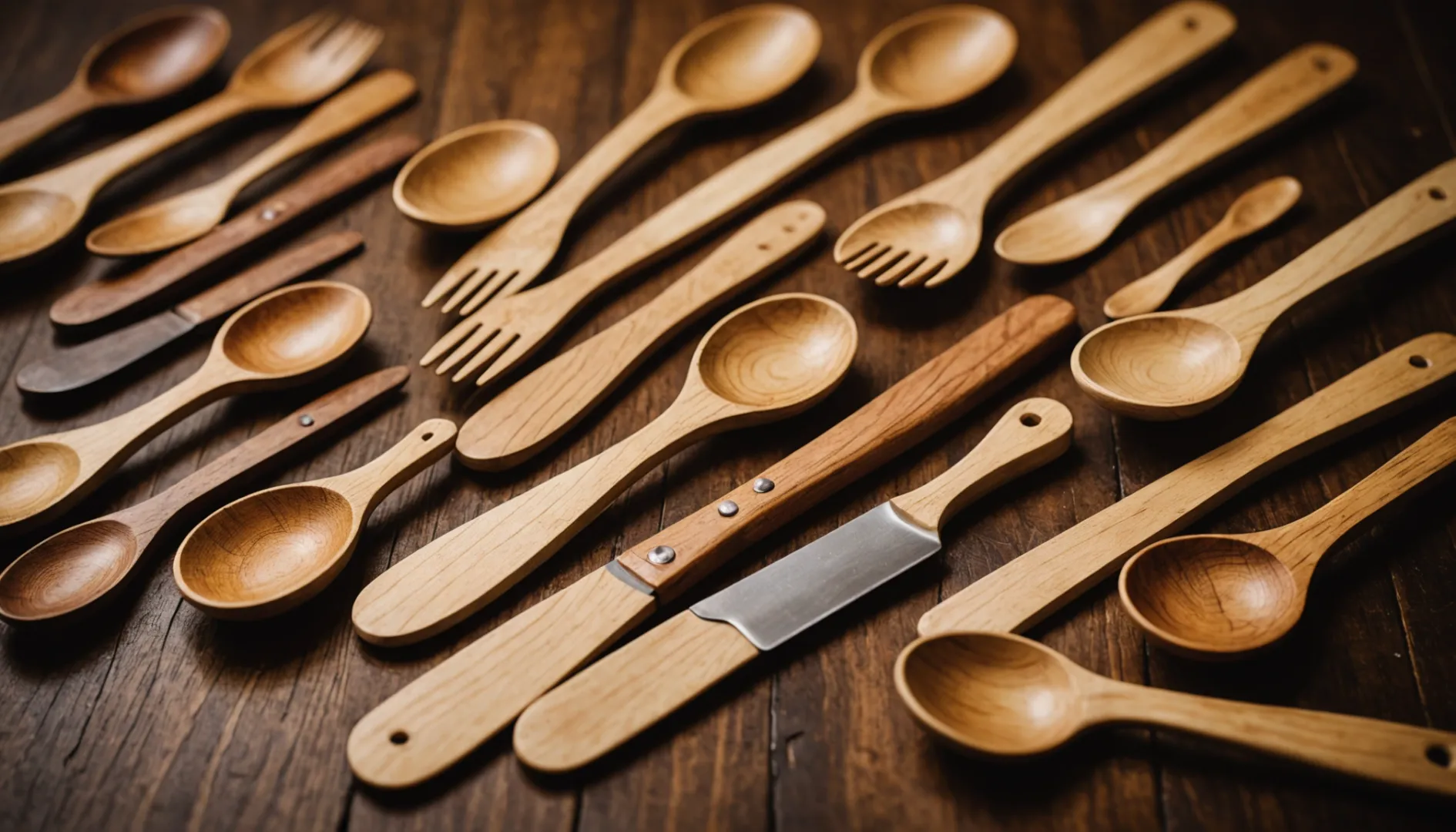
Have you ever paused to admire a beautifully crafted wooden spoon or fork? There's something undeniably enchanting about wooden cutlery that draws us in.
The choice of wood in cutlery affects both appearance and functionality. Hardwoods like maple offer durability and a refined look, while softer woods like linden provide cost-effectiveness and a lighter feel. The wood's grain, color, and texture enhance the cutlery's aesthetic appeal, aligning with eco-friendly dining experiences.
While we've touched on the basics of how wood choice impacts aesthetics, there’s so much more to explore about maintaining these beautiful utensils and ensuring they are a sustainable choice. Dive deeper to discover tips on care, sustainability certifications, and design innovations.
Maple wood cutlery is more durable than linden wood cutlery.True
Maple is a hardwood, offering greater strength and resistance to wear compared to the softer, more porous linden.
What Types of Wood Are Best for Cutlery?
Choosing the right wood for cutlery isn't just about aesthetics; it's crucial for durability and functionality.
The best woods for cutlery include hardwoods like maple, oak, and cherry, known for their strength and resistance to wear. These woods offer a smooth finish and maintain their integrity over time, making them ideal for utensils that require frequent use. Softwoods like pine or cedar are less suitable due to their porous nature.
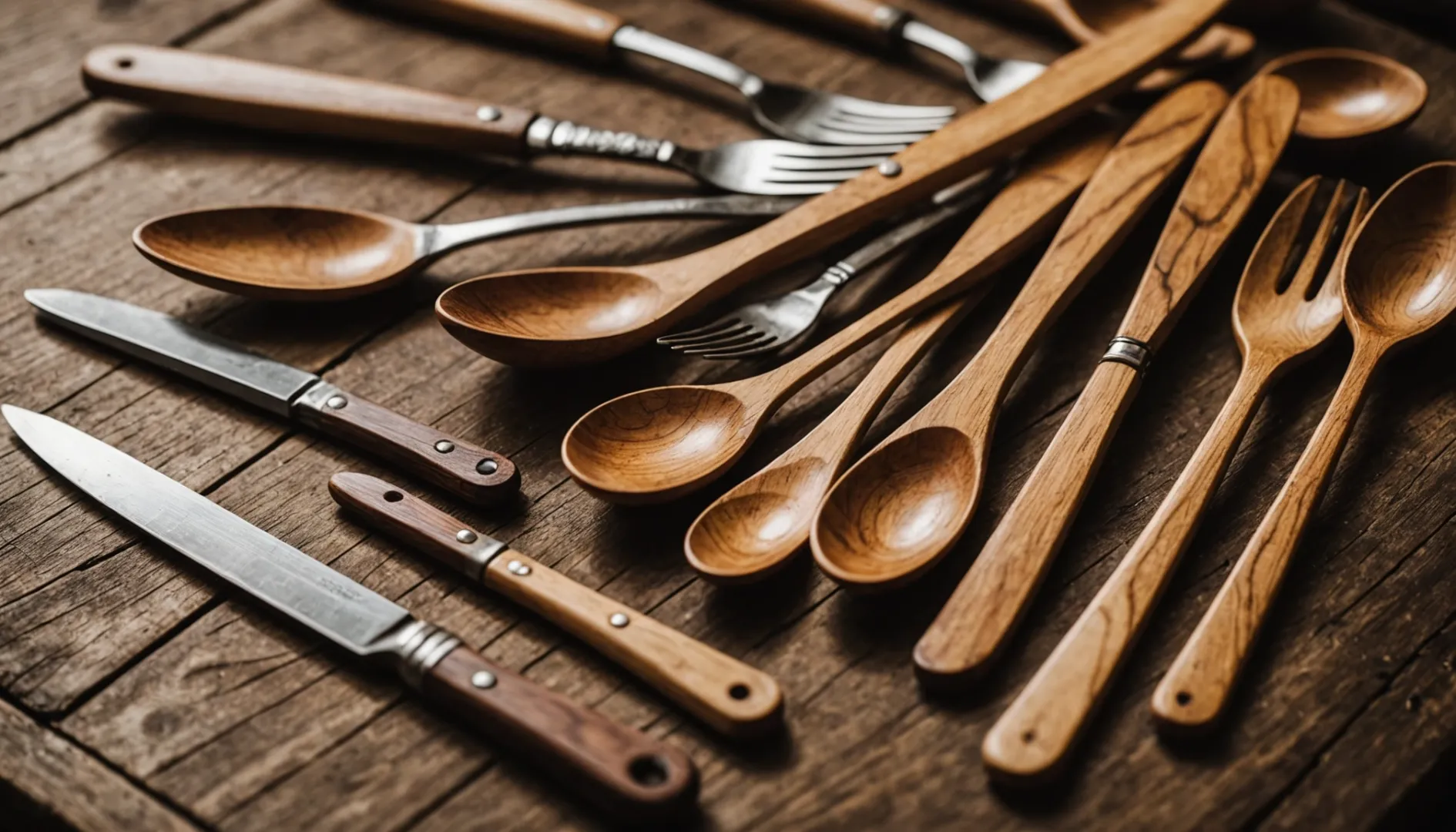
Understanding the Characteristics of Hardwoods
When selecting wood for cutlery, hardwoods are often preferred due to their dense structure, which provides excellent durability and longevity. Maple and oak are popular choices because they are less prone to splintering and can withstand frequent use.
-
Maple: Known for its fine grain and smooth surface, maple is resistant to moisture absorption, reducing the risk of bacterial growth. Its subtle color enhances the natural look of cutlery.
-
Oak: Offers a robust texture and darker hue, appealing to those looking for a rustic aesthetic. It's renowned for its hardness and wear resistance, making it a durable option.
-
Cherry: Valued for its rich, warm tone and fine grain, cherry wood adds an elegant touch to cutlery. It ages gracefully, developing a deeper patina over time.
| Wood Type | Durability | Grain Texture | Color |
|---|---|---|---|
| Maple | High | Fine | Light |
| Oak | High | Coarse | Medium |
| Cherry | Medium | Fine | Dark |
The Role of Softwoods in Cutlery
While hardwoods dominate the cutlery scene, softwoods like linden are occasionally used due to their lightweight nature and cost-effectiveness. However, their high porosity can be a downside:
- Linden: Offers a light feel but is less durable than hardwoods. Suitable for disposable or short-term use items.
Importance of Sustainable Sourcing
Sustainability is crucial when choosing wood for cutlery. Opting for woods with certifications such as FSC certification1 ensures responsible sourcing and environmental conservation.
- Bamboo: While not a wood but a grass, bamboo is noteworthy for its rapid growth and renewability. It's often combined with other materials to enhance strength while maintaining eco-friendliness.
To maintain the longevity of your wooden cutlery, consider factors like proper drying and regular oiling. For more detailed tips on maintenance, explore wooden cutlery care2.
In conclusion, selecting the best wood type involves balancing factors such as durability, aesthetics, and sustainability. Each type offers unique benefits that cater to different needs and preferences.
Maple wood is less prone to splintering.True
Maple's dense structure makes it resistant to splintering.
Softwoods like cedar are ideal for cutlery.False
Cedar is porous, making it unsuitable for durable cutlery.
How Does Wood Grain Affect Cutlery Design?
The grain of wood significantly influences the design and functionality of cutlery, affecting its aesthetic appeal and durability.
Wood grain affects cutlery design by influencing texture, appearance, and strength. Different grains can enhance the utensil's visual appeal, grip, and resilience, aligning with both functional and aesthetic goals.
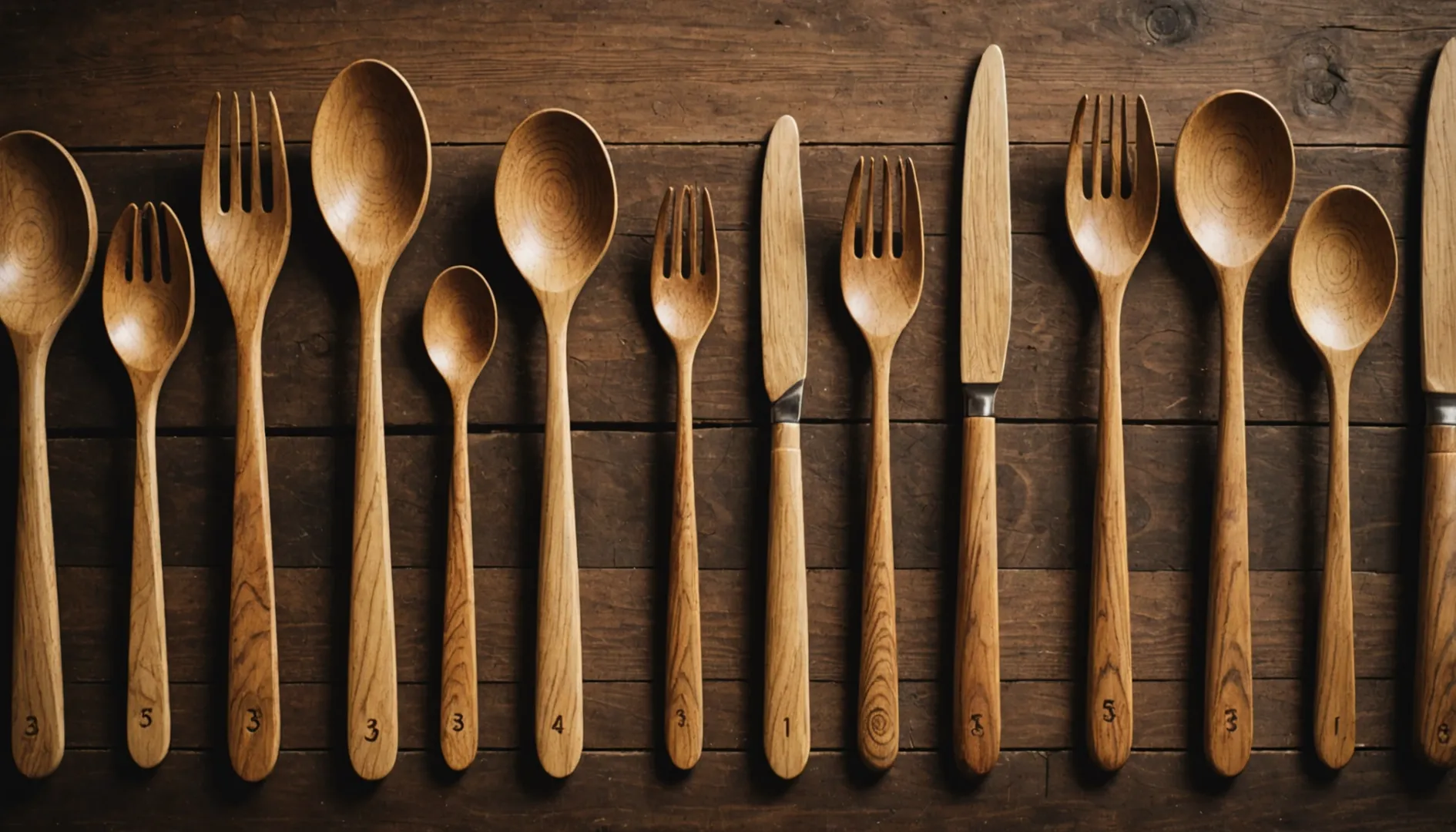
Understanding Wood Grain Patterns
Wood grain refers to the alignment, texture, and appearance of fibers in wood. Each type of wood exhibits unique grain patterns that can range from straight to wavy or even curly. These patterns are not just visually appealing; they play a crucial role in defining the strength and usability of wooden cutlery.
For instance, straight grain wood tends to be more uniform, offering a smooth finish that is ideal for a sleek and modern look. This type of grain often makes the utensils easier to clean and maintain. In contrast, wavy or curly grains add a rustic charm but may require additional care to prevent splinters or cracks over time.
Influence on Cutlery Aesthetics
The aesthetic appeal of wooden cutlery largely depends on the wood's grain pattern. Bold grains provide a natural, handcrafted look that is highly sought after in artisanal markets. This look can be enhanced by finishes like oils or waxes, which highlight the natural beauty of the grain.
Wood species like oak or ash, with their pronounced grain patterns, are often used to create statement pieces that stand out on any dining table. The choice of grain can also complement specific culinary settings or themes, such as rustic or eco-friendly dining experiences.
Functional Implications of Wood Grain
Beyond aesthetics, wood grain impacts the functionality of cutlery. The orientation and tightness of the grain can affect the utensil's strength and durability. Tighter grains tend to resist moisture absorption better, reducing the likelihood of warping or cracking.
Manufacturers need to consider how different grains will perform under various conditions. For example, open-grain woods might be more susceptible to bacterial growth if not properly treated with food-safe oils or finishes. This makes selecting the right grain essential for ensuring the longevity and hygiene of wooden utensils.
Selecting the Right Wood for Cutlery
Choosing the right wood involves balancing aesthetic desires with practical needs. Hardwoods like maple and cherry, known for their fine grain, offer durability and a smooth finish suitable for premium cutlery. On the other hand, softer woods like linden or birch, which may feature more prominent grains, provide a cost-effective alternative for everyday use.
A table illustrating the characteristics of different wood grains:
| Wood Type | Grain Pattern | Characteristics | Common Uses |
|---|---|---|---|
| Maple | Fine | Durable, smooth finish | Premium cutlery |
| Oak | Pronounced | Strong, rustic appeal | Statement pieces |
| Birch | Subtle | Lightweight, affordable | Everyday use |
Understanding how wood grain affects cutlery design enables better decision-making in selecting materials that fulfill both visual and functional expectations.
Straight grain wood is easier to clean than wavy grain.True
Straight grain offers a smooth finish, reducing dirt traps.
Open-grain woods are more resistant to bacterial growth.False
Open-grain woods absorb moisture, promoting bacterial growth.
What Are the Maintenance Tips for Wooden Cutlery?
Wooden cutlery offers a charming and eco-friendly alternative to traditional utensils. But how do you keep them in top shape?
To maintain wooden cutlery, wash by hand with mild soap and warm water, dry immediately, and apply mineral oil regularly. Avoid soaking or exposing them to high heat. These practices ensure durability, prevent cracking, and maintain their aesthetic appeal.
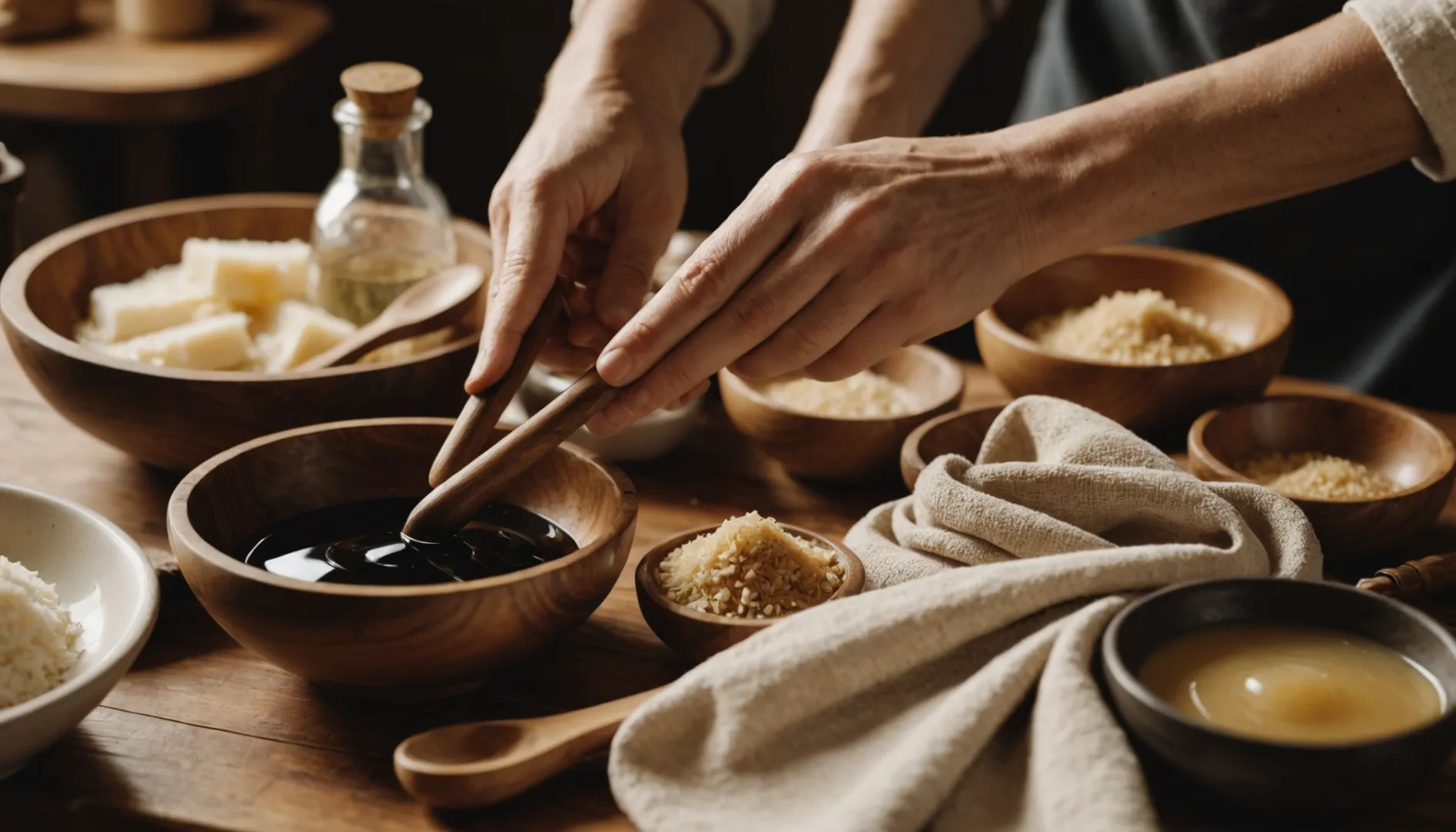
Proper Cleaning and Drying
To keep your wooden cutlery in excellent condition, always wash them by hand using mild soap and warm water. Avoid soaking them as prolonged exposure to water can cause the wood to swell or crack. After washing, immediately dry your utensils with a soft cloth to prevent moisture absorption, which can lead to bacterial growth.
Regular Oiling
Oiling is essential for maintaining the integrity and appearance of wooden cutlery. Use food-safe oils like mineral oil or coconut oil to condition the wood. Apply the oil with a soft cloth, ensuring even coverage. Allow the oil to soak in for a few hours or overnight before wiping off any excess. This process not only protects the wood from drying out but also enhances its natural sheen.
Storage Considerations
Store your wooden cutlery in a dry place away from direct sunlight or heat sources. Humidity can cause warping, while excessive heat can dry out the wood, making it brittle over time. Consider using a utensil holder that allows air circulation to further prevent moisture buildup.
Avoid Harsh Conditions
Wooden cutlery should never be placed in dishwashers, as the combination of water and heat can damage the wood's structure. Additionally, avoid using wooden utensils with very hot or acidic foods that might compromise their finish. High-quality finishes can withstand regular use, but it's crucial to reapply oil treatments periodically.
Check for Wear and Tear
Regularly inspect your cutlery for signs of wear such as cracks or splinters. If any defects are found, sanding lightly with fine-grit sandpaper can help smooth out rough areas. Reapplying oil afterward will restore their finish and protect against further damage.
For more insights on how different wood types influence durability, check out our guide on wood grain effects3. And if you're interested in sustainable choices, explore certifications like eco-certification for wooden products4.
Wooden cutlery can be washed in a dishwasher.False
Dishwashers can damage wooden cutlery due to water and heat exposure.
Regular oiling prevents wooden cutlery from drying out.True
Oiling maintains wood moisture, preventing it from becoming brittle.
Is Wooden Cutlery Truly Sustainable?
Wooden cutlery is often touted as a sustainable alternative to plastic utensils. But how sustainable is it really?
Wooden cutlery is sustainable when sourced responsibly and maintained well. It decomposes faster than plastic and, with proper care, can last for years, minimizing waste. Certifications like FSC and eco-friendly coatings enhance its sustainability.
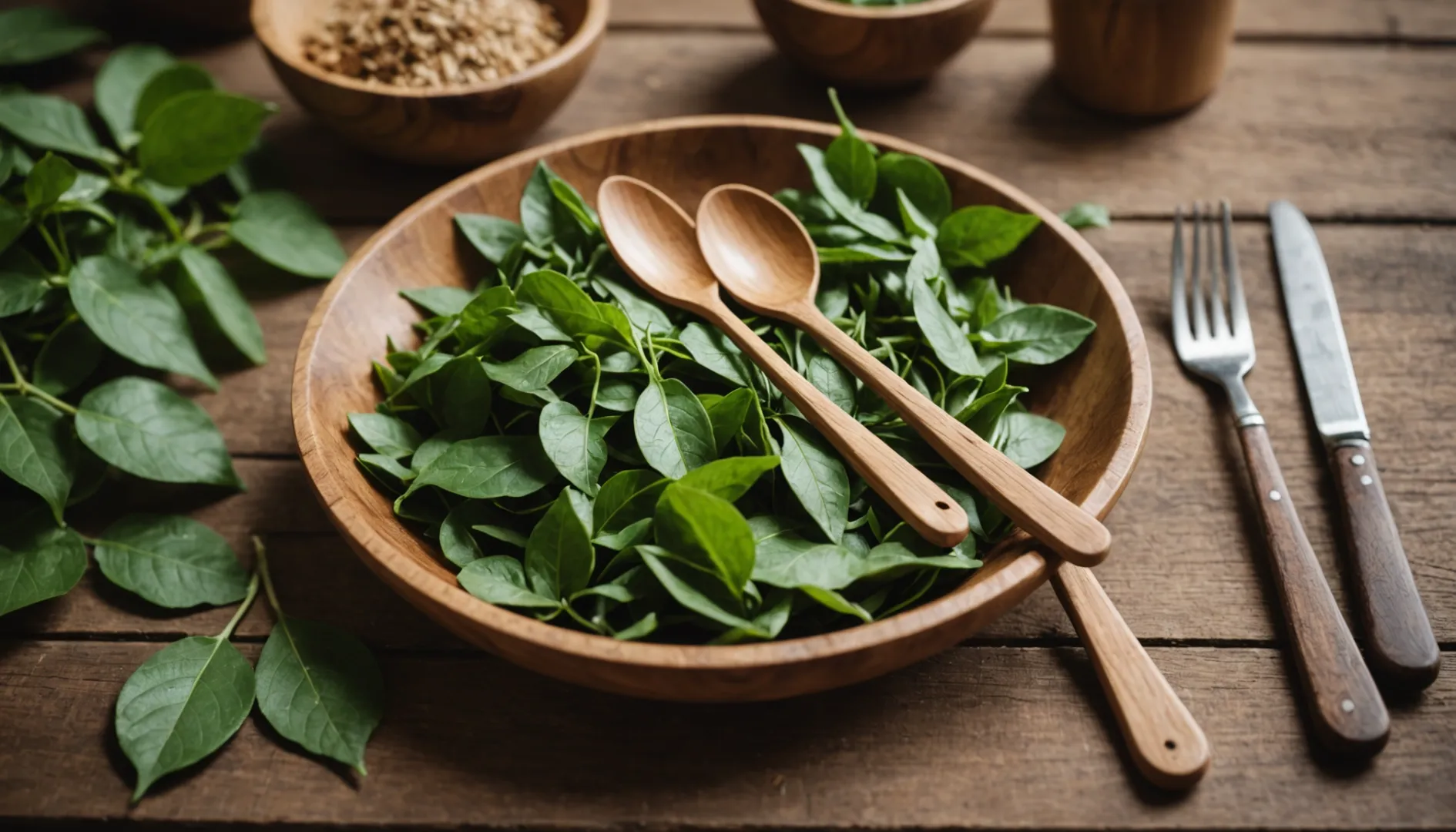
Understanding the Lifecycle of Wooden Cutlery
The sustainability of wooden cutlery begins with the sourcing of the wood itself. It's crucial that manufacturers obtain their wood from responsibly managed forests, which ensures that the ecosystem remains intact and helps combat deforestation. Certifications like FSC5 not only authenticate this process but also offer a level of transparency and trust for consumers.
Moreover, the manufacturing process plays a pivotal role in determining the cutlery's environmental footprint. By opting for minimalistic designs, manufacturers can reduce material waste without compromising durability. For instance, some companies have begun using innovative techniques to combine wood with bamboo fibers, creating stronger yet lightweight cutlery.
The Role of Coatings and Treatments
While wood is naturally porous and can absorb moisture, leading to bacterial growth, manufacturers often apply natural coatings such as beeswax or plant oils. These not only protect the wood but also improve its longevity and hygiene. However, it's important that these coatings are food-safe and free from harmful chemicals.
With frequent use, these finishes may wear off, requiring consumers to reapply oils regularly to maintain the integrity of the cutlery. This maintenance routine not only extends the life of the utensils but also keeps them safe for everyday use.
Waste Management and Disposal
One of the primary benefits of wooden cutlery is its biodegradability. Unlike plastic, which can take centuries to break down, wooden utensils decompose relatively quickly when disposed of correctly. However, consumers must be mindful to compost them properly, as not all municipal waste systems accommodate compostable materials efficiently.
The use of compostable coatings further enhances the eco-friendliness of wooden cutlery. Some manufacturers are experimenting with coatings that allow the utensils to break down completely within months, merging functionality with environmental responsibility.
Consumer Education and Maintenance
For wooden cutlery to truly be sustainable, consumer education on proper care is essential. Proper maintenance includes washing utensils by hand with mild soap, avoiding prolonged soaking, and storing them in dry environments. High heat exposure should be avoided as it can cause the wood to crack or warp.
Educating consumers about these simple practices ensures they get the most out of their wooden cutlery while maintaining its environmental benefits. Regular reconditioning with natural oils keeps the wood from drying out and cracking, thereby prolonging its usability and reducing waste.
As regulations around single-use plastics tighten globally, wooden cutlery stands out as an appealing alternative—especially when paired with innovative designs that allow short-term reuse. By embracing such alternatives, consumers contribute to a more sustainable future while enjoying a natural dining experience.
Wooden cutlery decomposes faster than plastic.True
Wooden cutlery is biodegradable, unlike plastic, which takes centuries.
FSC certification is not required for sustainable wood.False
FSC certification ensures responsible sourcing, crucial for sustainability.
Conclusion
Choosing the right wood for cutlery enhances aesthetics and supports sustainability. Consider durability, care requirements, and eco-credentials when selecting wooden utensils to ensure lasting beauty and function.
-
Ensures wood is sourced sustainably and ethically.: FSC certification ensures that products come from responsibly managed forests that provide environmental, social and economic benefits. ↩
-
Provides detailed tips on extending the lifespan of wooden utensils.: Most wooden spoons, utensils and cutting boards are treated with mineral oils, which creates an inert, neutral surface that will not allow bacteria to reside. ↩
-
Learn how different wood grains influence the longevity of cutlery.: An end grain cutting board will appear less damaged by the knife cutting. It's sort of like you're splitting the fibers of the wood rather than ... ↩
-
Discover certifications ensuring sustainability in wooden products.: A product containing certified wood is one where the wood used has been verified as harvested in a sustainable way. ↩
-
Learn how FSC certification ensures sustainable sourcing and forest management.: FSC certification ensures that products come from responsibly managed forests that provide environmental, social and economic benefits. ↩

